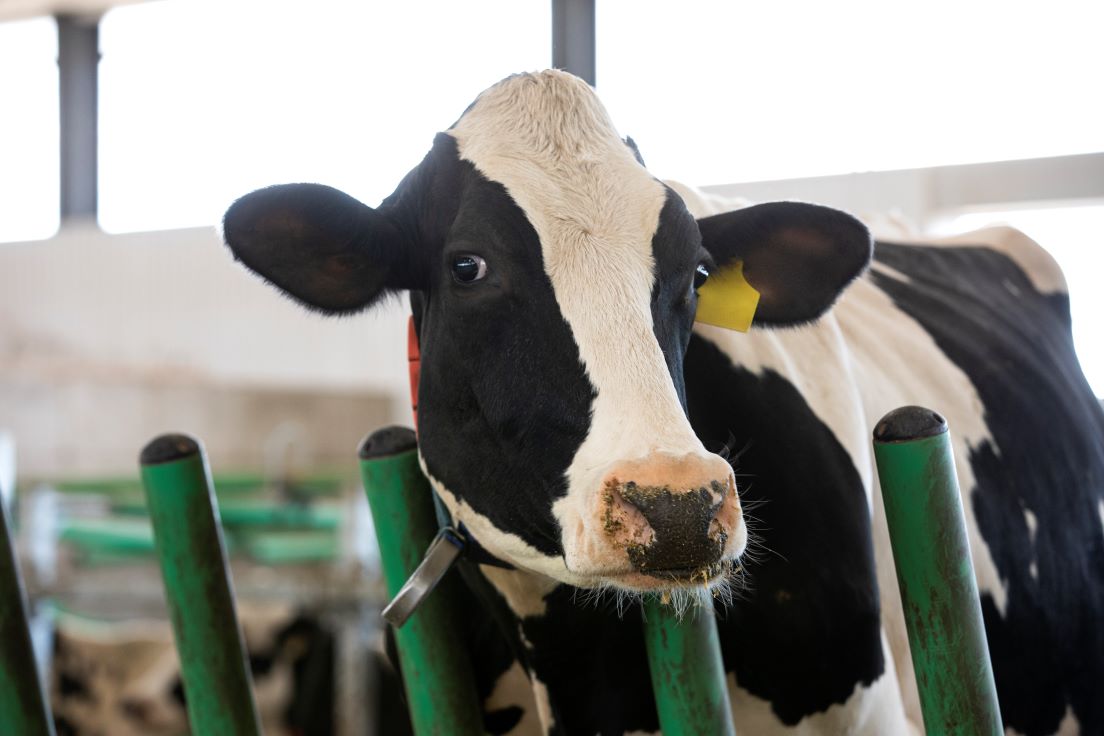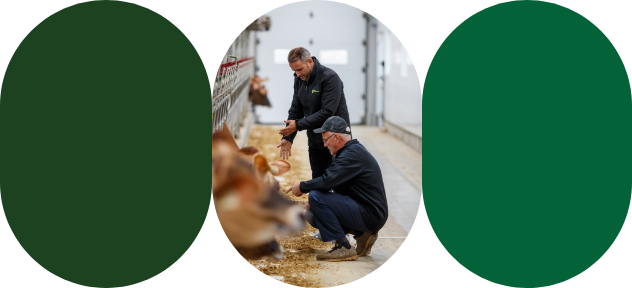Transitioning to robotic milking : A complete routine change
The road to robotic milking hasn’t always been smooth at Ferme RJM Côté in Hébertville-Station, Québec. In addition to having to learn a whole new production method and set of equipment, the owners had to completely rethink their routine. Luckily, their agri-advisor was there to provide careful advice and help them along the way.
“The hardest part of implementing robotic milking is changing farmers’ habits,” says Mélanie Dufour, Agri-advisor, Ruminants and Crops, Nutrinor Coopérative. “Cows aren’t the only ones who like to stick to their routine.”
The expert, who followed the farm step by step in its transition to robotic milking, says that initially the owners continued to manage their herd as they always had. “We would tend the cows three times a day,” recalls co-owner Catherine Brassard with a laugh. “Mélanie told us we needed to stop doing that.”
As she went over the footage captured by cameras installed in the barn, Mélanie also noticed that the farm’s co-owner, Marc-André Côté, would often “bother” his cows. “It’s a big habit change for the animals and for the farmers,” she says. “Both sides have to come to terms with the new reality.”
Mélanie has been working with farmers for over 20 years, and from what she’s seen, Catherine and Marc-André care a great deal about doing things right. They wanted to be productive from the very first year of robotic milking. “There’s often an initial drop in production, and that’s normal,” she says. “I always tell my clients that the first twelve months are an adjustment period. We can resume looking at numbers later.”
Three changes to optimize production
To ease the transition to robotic milking, Mélanie suggested three changes to the owners of Ferme RJM Côté.
- Use the milk-first approach: The milk-first approach involves having “the cows go to the free stalls, then go to the robot and eat after being milked,” she says.
- Give up fresh silage: “It’s not very compatible with robotic milking,” says Mélanie. “The cows of Ferme RJM Côté were eating their fill but not going to the robot. We discussed the issue and decided to wait for the silage to ferment before serving it.” This one change quickly stabilized production.
- Feed the cows Transimil 15: Calvings were a major challenge at Ferme RJM Côté. The cows were suffering from hypocalcemia and would hang around the robot. “The farmers gave them calcium, but they didn’t have much appetite,” says Mélanie. She suggested they switch to a new anionic ration with Transimil 15. Corn silage was also added to the diet during the transition period. These changes solved metabolic problems at calving and produced 5 kg more milk at peak.
The owners of Ferme RJM Côté have come a long way since their switch to robotic milking. They’ve had to relearn their trade and rebuild a new herd—some cows from the old herd were too old to make the transition.
But their efforts did pay off. After four years, their cows are producing over 36 litres of milk per day, compared with 32 litres in stanchion barns.


